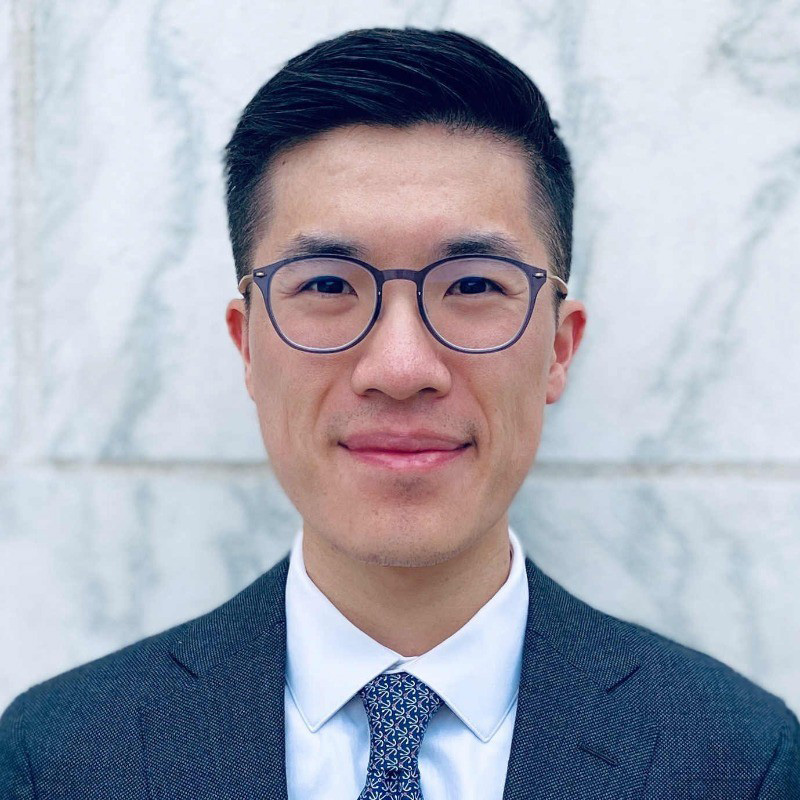Key takeaways
- Presbyopia, lens changes, and reduced tear production typically begin in your 40s, natural aging being the most common cause.
- However, age-related conditions like cataracts, macular degeneration, and glaucoma can be managed with early detection.
- Screen time, UV exposure, smoking, and poor nutrition can accelerate vision decline and worsen eyesight over time. Sudden vision loss, flashes of light, or persistent changes require immediate professional care.
Overview
Have you noticed that reading small print has become more challenging lately? Or perhaps you’re struggling to see clearly at night, or finding yourself squinting more often than before? If you’re asking yoursel, “Why is my vision getting worse?” you’re not alone.
Vision changes are widespread, especially as we age, but understanding the underlying causes can help you take proactive steps to protect your eyesight. Making lifestyle adjustments, such as improving your daily habits and managing environmental factors, can be effective proactive measures to protect and enhance your eye health.
While some vision changes are a natural part of aging, others may signal underlying conditions that require attention. Knowing your family history of eye conditions can help you and your eye care professional assess your risk and take preventive action.
The good news is that many causes of vision decline can be managed, treated, or even prevented with the proper knowledge and care. Let’s explore the various factors that can contribute to worsening vision and what you can do about them.
Natural aging changes that affect vision
As we journey through life, our eyes undergo several natural changes that can affect our vision. The aging process leads to age-related changes in the eyes, which are a regular part of the natural aging process. Understanding these changes helps distinguish between normal aging and conditions that require medical attention.
Presbyopia: The reading challenge
Presbyopia is the most common age-related vision change, beginning in your early to mid-40s. This condition occurs when the eye’s lens gradually loses its flexibility, making it difficult to focus on close objects. As a result, presbyopia makes it harder to focus on nearby objects and perform close-up tasks such as reading. You might notice yourself holding books, menus, or your phone at arm’s length to see them.
According to a recent research, this lens hardening is a natural consequence of aging and affects nearly everyone to some degree. While presbyopia can be frustrating, it’s easily corrected with reading glasses, bifocals, or progressive lenses.
Lens and pupil changes
Beyond presbyopia, other structural changes occur in your eyes:
- Lens density increases: The lens becomes less transparent over time, which can affect how light passes through
- Pupil size decreases: Smaller pupils allow less light to enter your eyes, making it harder to see in dim conditions
- Tear production declines: Reduced tear production can lead to dry eyes, causing discomfort and blurred vision
These changes explain why many people find they need more light for reading materials or experience more difficulty with night vision as they age.
Common age-related eye conditions
While natural aging changes are regular, age-related vision changes and eye conditions are common causes of vision issues as people get older. Several eye conditions become more prevalent with age and can significantly impact vision if left untreated.
Cataracts: Clouding of vision
Cataracts occur when the lens of the eye becomes cloudy, leading to blurred vision, increased sensitivity to glare, and difficulty seeing at night. Research by Truscott & Zhu (2010) shows that cataracts are prevalent, affecting more than half of Americans by age 80.
Symptoms of cataracts include:
- Cloudy or blurry vision
- Increased sensitivity to light and glare
- Seeing “halos” around lights
- Frequent changes in eyeglass prescriptions (some people may notice their vision continues to worsen, even if they wear glasses)
- Fading or yellowing of colors
The good news? Cataract surgery is one of the most successful medical procedures, with a success rate of over 95%.
Age-related macular degeneration (AMD)
AMD affects the macula, the central part of your retina responsible for sharp, detailed central vision. AMD can lead to central vision loss and deteriorating eyesight. This condition can make it difficult to read, recognize faces, or see fine details, though peripheral vision typically remains intact.
There are two types of AMD:
- Dry AMD: More common and progresses slowly
- Wet AMD: Less common but more severe, requiring immediate treatment
Glaucoma: The silent thief of sight
Glaucoma is often referred to as the “silent thief of sight” because it typically exhibits no early symptoms. This condition involves damage to the optic nerve, often due to increased pressure within the eye. Without treatment, glaucoma can lead to permanent vision loss.
Diabetic retinopathy
For people with diabetes, diabetic retinopathy is a serious concern. This condition occurs when high blood sugar levels damage the blood vessels in the retina. Diabetes can harm the small blood vessels and the light-sensitive tissue at the back of the eye, posing a significant risk for vision loss. According to a research study, diabetic retinopathy is a leading cause of blindness in working-age adults, making blood sugar control crucial for eye health.
Refractive errors that worsen with age
Refractive errors occur when the shape of your eye prevents light from focusing correctly on your retina. While these can occur at any age, they often change as we get older:
- Myopia (nearsightedness): May worsen, especially with increased screen time
- Hyperopia (farsightedness): Often becomes more noticeable as the lens loses flexibility
- Astigmatism: Can change over time due to corneal shape changes
As refractive errors change, people may notice symptoms such as trouble focusing and worsening eyesight, which can indicate the need for an updated prescription. These errors are typically correctable with glasses, contact lenses, or refractive surgery.
Lifestyle factors that accelerate vision decline
Your daily habits and lifestyle choices can significantly impact your eye health and accelerate vision decline. Making lifestyle adjustments can help maintain good eyesight and slow the decline of vision.
Digital eye strain
In our screen-dominated world, digital eye strain has become increasingly common. Prolonged screen time and exposure to blue light from digital devices, such as a computer screen, can lead to computer vision syndrome and cause symptoms like eye fatigue. Prolonged computer, tablet, or smartphone use can cause:
- Dry eyes
- Blurred vision
- Headaches
- Neck and shoulder pain
The 20-20-20 rule can help: every 20 minutes, look at something 20 feet away for at least 20 seconds.
UV exposure
Ultraviolet (UV) radiation from the sun can damage your eyes over time, increasing the risk of cataracts, macular degeneration, and other eye conditions. Always wear sunglasses that block 100% of UV-A and UV-B rays when outdoors. Sun reflecting off surfaces can also cause glare and visual discomfort, so wearing sunglasses helps reduce this effect.
Smoking
Smoking significantly increases your risk of developing:
- Cataracts
- Age-related macular degeneration
- Diabetic retinopathy
- Dry eye syndrome
Quitting smoking is one of the best things you can do for your eye health.
Poor nutrition
A diet lacking in essential nutrients can contribute to vision problems. Key nutrients for eye health include:
- Omega-3 fatty acids: Found in fish, support retinal health
- Lutein and zeaxanthin: Found in leafy greens, protect the macula
- Vitamins C and E: Antioxidants that protect against oxidative damage
- Zinc: Supports overall eye health
Medications that can affect vision
Certain medications can have side effects that impact your vision:
- Antihistamines: Can cause dry eyes
- Antidepressants: May lead to blurred vision or dry eyes
- Blood pressure medications: Can affect vision clarity
- Steroids: Long-term use may increase cataract and glaucoma risk
Always discuss any vision changes with your healthcare provider, especially if they occur while you are starting new medications.
Warning signs that vision is deteriorating
Recognizing the warning signs of vision problems is crucial for early intervention and treatment. Seek immediate medical attention if you experience:
- Sudden vision loss in one or both eyes
- Flashes of light or new floaters
- A shadow or “curtain” over your visual field
- Severe eye pain
- Sudden onset of double vision
- Eye injuries, especially after accidents, sports, or chemical exposure
Schedule a routine eye exam if you notice:
- Gradual vision changes
- Difficulty reading or seeing fine details
- Increased sensitivity to light
- Frequent headaches
- Trouble seeing at night
When to seek professional help
Seeing your eye doctor regularly for eye exams is essential for maintaining good eye health. The American Academy of Ophthalmology recommends:
- Ages 20-39: Every 5-10 years (more frequently if you have risk factors)
- Ages 40-54: Every 2-4 years
- Ages 55-64: Every 1-3 years
- Ages 65+: Every 1-2 years
Don’t wait for symptoms to appear. Many eye conditions, like glaucoma, can cause irreversible damage before you notice any vision changes.
Prevention strategies and treatments available
The good news is that many vision problems can be prevented or effectively treated. Prevention and early treatment can help keep your eyes healthy and maintain them.
Treatment options may include:
- Prescription glasses or contact lenses
- Medications for certain conditions
- Surgical procedures for cataracts or other issues
- Low vision devices for those with severe vision loss
Regular eye exams and adopting a healthy lifestyle are crucial steps to maintaining eye health and preserving good vision over time.
Prevention strategies
- Wear UV-protective sunglasses when outdoors
- Follow the 20-20-20 rule for screen use
- Maintain a healthy diet rich in eye-friendly nutrients
- Don’t smoke or quit if you currently smoke
- Manage chronic conditions like diabetes and high blood pressure
- Engage in regular exercise to improve blood circulation and reduce the risk of eye conditions
- Get adequate sleep to allow your eyes to rest and recover
Treatment options
Modern eye care offers numerous treatment options:
- Corrective lenses: Glasses and contact lenses for refractive errors
- Cataract surgery: A Highly successful procedure to restore clear vision
- Anti-VEGF injections: For wet macular degeneration
- Laser therapy: For various retinal conditions
- Glaucoma medications: Eye drops to reduce intraocular pressure
- Refractive surgery: LASIK and other procedures to correct vision
The importance of regular eye exams
Regular eye exams are your best defense against vision loss. During a comprehensive eye exam, your eye care professional can:
- Detect eye diseases in their early stages
- Monitor changes in your vision
- Update your prescription if needed
- Check for signs of other health conditions
- Provide personalized recommendations for eye health
Remember, many eye conditions have no early symptoms, making regular exams crucial for early detection and treatment.
Bottom line
While some vision changes are an inevitable part of aging, many factors that contribute to vision decline are within your control. By understanding the causes of worsening vision and taking proactive steps to protect your eyes, you can maintain better vision health throughout your life.
The key is to stay informed, maintain healthy habits, and work closely with your eye care professional to monitor and address any changes in your vision. Your eyesight is precious so taking care of it today can help ensure you continue to see clearly for years to come.
Frequently Asked Questions (FAQs)
- Is it normal for vision to get worse with age?
Yes, some vision changes are a regular part of aging, particularly presbyopia (difficulty focusing on close objects), which typically begins in your 40s. However, significant vision loss is not a regular part of aging and should be evaluated by an eye care professional.
- How can I tell if my vision changes are serious?
Sudden changes in vision, flashes of light, new floaters, eye pain, or a shadow over your visual field require immediate medical attention. Gradual changes should be evaluated during regular eye exams.
- Can lifestyle changes improve my vision?
While lifestyle changes can’t reverse existing vision problems, they can help prevent further decline and support overall eye health. Eating a healthy diet, protecting your eyes from UV light, and managing chronic conditions can all make a difference.
- How often should I have my eyes examined?
The frequency depends on your age and risk factors. Generally, adults over 40 should have comprehensive eye exams every 2-4 years, with the frequency increasing to every 1-2 years after age 65.
- Are there any supplements that can help with vision?
Some studies suggest that certain supplements (like those containing lutein, zeaxanthin, and omega-3 fatty acids) may support eye health, particularly for age-related macular degeneration. However, consult with your eye care professional before starting any supplements.
References
- Cvekl, A., & Vijg, J. (2024). Aging of the eye: Lessons from cataracts and age-related macular degeneration. Ageing Research Reviews, 95, 102253.
- Petrash, J. M. (2013). Aging and age-related diseases of the ocular lens and vitreous body. Investigative Ophthalmology & Visual Science, 54(14), ORSF54-ORSF59.
- Truscott, R. J. W., & Zhu, X. (2010). Presbyopia and cataract: a question of heat and time. Progress in Retinal and Eye Research, 29(6), 487-499.









